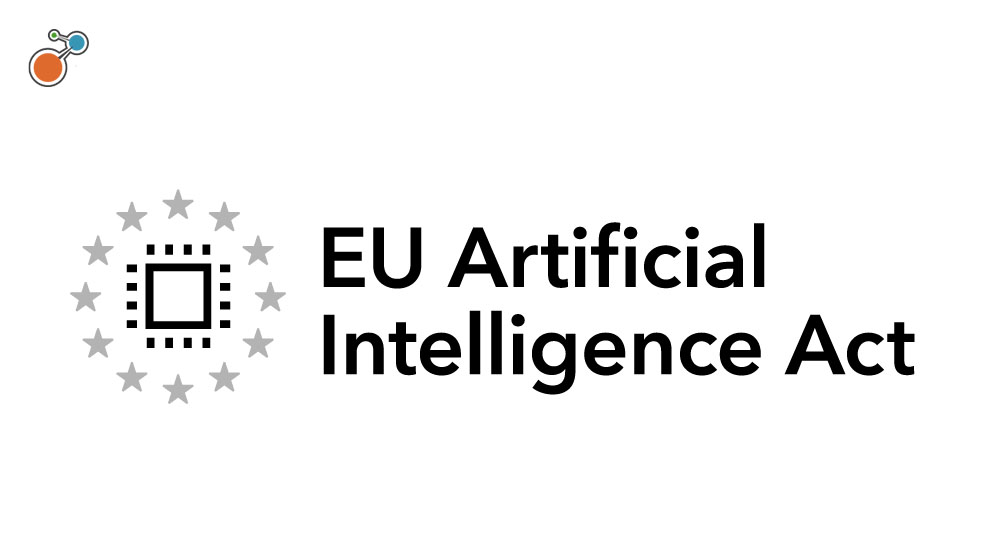The new year is an opportunity to find the energy and inspiration not only to tackle our personal goals, but to also tackle professional and organizational goals—particularly those related to the risk, insurance and claims side of the business.
To offer some inspiration and help you solidify your own goals, we asked the members of our Riskonnect Advisory Board to tell us their own professional new year’s resolutions. Here are a few of their resolutions:
- Help staff achieve work-life balance
- Proactively manage safety and prevent accidents
- Reduce claims expenses
- Launch company-wide transformation/change initiative
All of these are, of course, great resolutions. And even better, the right risk management technology can enable risk, insurance and claims professionals to achieve these goals. Stay tuned for how it can help reduce claims expenses and launch company-wide transformation initiatives, but read on to learn how it can also help with work-life balance and proactively managing safety:
Help staff achieve work-life balance
All too often work-life balance is considered a “soft benefit” with leadership or managers perceiving such a benefit as offering little monetary return on investment. However, truly investing in the tools necessary to offer employees real work-life balance can make a dramatic shift across the business.
For instance, automating the fulfillment of paperwork—across a variety of departments—doesn’t just result in your workforce spending less time doing work. Actually, it typically results in your workforce spending more time doing meaningful work that can save hard dollars or increase profits. Manual paperwork never saved a company money, but automated processes can result in a whole host of savings and added value.
In fact, one of the respondents to Riskonnect’s new year’s resolution survey cited work life balance for his team as a professional goal because he needs his team functioning at “100 percent full-speed ahead.” And just as work-life balance is necessary for high functioning teams, the right right risk management technology is necessary for achieving work-life balance.
Here are just a few ways the right risk management technology can enable work-life balance for your workforce in a variety of risk, insurance, claims, procurement and compliance related roles—while also offering your organization a return on investment:
- It can create a paperless claims process that eliminates time spent shuffling paper around, as well as reduce redundant data entry. Electronic incident forms can be automatically converted into electronic claims forms with just a few clicks. Relevant data is auto-populated instead of manually re-entered by a claims professional. Instead of focusing on pushing paper, claims professionals can focus on reducing claims; detecting fraudulent claims; or intervening early with claims that are projected to be costly.
Read, “Three Tips for Preventing Claims Adjuster Burnout.”
- It can streamline the entire vendor management process–from automating how you manage certificates of insurance and contracts, to how you complete quality vendor assessments. Back and forth emails, phone calls and faxes regarding missing information or signatures will become distant memories. Spend less time on vendor compliance and more time ensuring you have the best vendors in place so you can providing the best customer service—winning, retaining and delighting customers.
Read, “Three Tips for Successfully Managing Vendors.”
- It can simplify report creation and sharing thanks to automatic data visualization tools; regularly scheduled data feeds that automatically upload claims information in real time; and dashboards that allow a variety of users to see information in a multitude of formats—all without a risk manager, safety manager, vendor manager or claims adjuster having to create unique one-off reports time and again. Again, this directs staff away from time consuming administrative work and toward more profitable and meaningful decision-making work.
Such capabilities aren’t mere bells and whistles—or just “nice to haves”—attached to risk management technology. They are actually time-saving solutions (and only a small sample, at that) that help solve for the problem of having an over-burdened workforce, while also bringing value to your business.
Proactively manage safety and prevent accidents
Creating a safe environment for employees, customers or visitors to your business or property is an admirable goal any year. And while zero injuries or even a culture of safety might seem lofty, they are tangible with the right risk management technology supporting your team.
Read, “How To Build An Award-Winning Safety Program.”
First, it improves how incident or accident data is collected. In fact, the right risk management technology can automate the entire incident management process, giving field users an automatic framework for how to respond to an incident and guidance around the data that needs to be collected in order to document the scene of an incident, accident or near miss—all while they are on site.
With a mobile device and just a few clicks, field users can login to a portal to both access and record relevant information. Electronic forms with already established data fields give field users an idea of the next steps they should take or the data they should collect. A guided, “wizard-style” collection process incorporates dynamic question logic, showing or hiding further questions based on previous responses.
Read, “How To Manage Accident And Incident Investigations In Four Easy Steps.”
While automated incident (accident) collection and investigation tools might seem reactive—since an undesired event has to take place, or nearly take place, to spur data collection or an investigation—it’s not necessarily the case. A well-built investigation process can get to the root cause(s) of an event and prevent similar events from occurring again.
For example, the right risk management technology can help you to conduct a “Five Whys” analysis — a technique whereby you repeatedly ask the question, “Why?” (at least five times, as an average), in order to get to the root cause. The system will automatically trigger “why” questions to help facilitate a productive investigation.
Such technology will also simplify how you analyze any accident, incident and near miss data —making it easier to interpret, and therefore, easier to uncover root causes. Data is collected, formatted, stored and shared in one place—not only giving users full access to relevant information, but giving them access in a single view as opposed to switching between different files and data sources with unique formats.
Even more, the right risk management technology will create meaningful visuals like interactive graphs, charts, timelines and cause and effect/fishbone diagrams from the data — making it easy to follow the incident’s narrative, as well as analyze causal and contributory factors to better prioritize and target corrective actions.
It will also help you easily facilitate corrective actions — creating simple and automatic processes for recording data, updating the status of any corrective activities, and escalating any issues up the chain to make sure they aren’t overlooked, but rather, completed in a timely manner.
Ultimately, the streamlined and flexible data collection process improves both the quality and quantity of information you can access regarding incidents, accidents or near misses. As such, it’s easier to explore root cause analyses and then take corrective actions—both critical steps in proactive safety management and accident prevention.
Don’t be deterred
Establishing goals or resolutions—whether they’re personal or professional—are an important step in setting yourself up for success in the new year.
It can be a challenge, though, especially as business objectives change and emerging risks—like the top business risks of 2018—can upend your goals. Don’t be deterred, though. Set a goal. Make a plan. Acquire the tools necessary to execute. This is your year.
Believe it or not, we’re already a couple weeks into the new year. Have you set your professional goals or resolutions, and aligned them with the goals of your organization? If not, perhaps we can provide you with some inspiration.
We recently reached out to members of our Riskonnect Advisory Board and asked them to fill us in on their professional new year’s resolutions for 2018. Their resolutions included helping their staffs achieve work-life balance, and proactively managing safety and preventing accidents—topics discussed in “New Year’s Resolutions for Risk Insurance and Claims Professionals (Part One).”
But other resolutions included reducing claims expenses and launching company-wide transformation/change initiatives—excellent resolutions, both of which we will discuss, along with how integrated risk management technology can help you attain these goals.
Reduce claims expenses
Reducing claims expenses is not a surprising goal among risk, claims and insurance professionals. But it might be one that professionals are reluctant to set if they don’t have the tools or action plan in place to actually execute. That’s where integrated risk management technology comes into play.
First and foremost, such technology will provide a single record for any item related to a specific claim—even e-mail communications tied to the claim. It’s all housed within the same system alongside all your other risk, claims and policy data. It will also allow you to easily monitor a claim’s status and payment processing.
Further, the right risk management technology can automate the entire claim management process: System workflow tasks initiate, automate and facilitate communication, actions and even analyses. All of this can decrease the length of time a claim is open, and since shorter claims are typically less expensive, you’ll be well on your way of reducing claims expenses.
Also helping to reduce claims expenses is the power of the analytics that truly integrated risk management technology can provide. Not only can the data be automatically updated and consolidated, it can be visualized and easily put into context so you can:
- Identify factors that may extend absences
- Quantify the impact of individual claims
- Speed up detection of future high-cost claims shortly after injury by identifying current low-cost claims that are likely to increase substantially
- Increase the effectiveness of claim administration dollars by focusing resources on future high-cost claims
Launch company-wide transformation/change initiative
Change management or organizational transformation is not something that can just happen. It requires focused goals, benchmarks and metrics, and organization-wide support—from the top down AND from the bottom up. It has to be everyone’s initiative, which requires transparency and tools that can support that transparency. Integrated risk management technology can help: It’s not just another siloed technology that only serves the risk management department.
It’s functionality can actually meet the needs of many departments across an organization—from procurement, human resources and legal departments to safety, compliance and risk management departments. That’s why so many organizations turn to integrated risk management technology when attempting to consolidate their overabundance of technology vendors.
Integrated Risk Management Technology can surface relevant risk information from wherever it’s hiding in an organization, connect it with other internal and external data, and normalize it securely in the cloud. It can also make risk data dynamic—updated and visualized with meaningful graphs, charts, etc., in real time. Such data storytelling is critical for transparency, quality decision making and engagement.
For instance, if your organization aspires to adopt a culture of safety, such an initiative cannot live in the safety department alone. You have to arm the front lines with the ability to easily collect standardized data on incidents and accidents, as well as help them understand the importance of collecting and reporting such data.
You must also assure them that they need not fear reporting. This of course means management and leadership are on board incentivizing and promoting safety, as opposed fear-based management around incidents and accidents. However, such an approach is more likely to resonate with management once they trust the quality of the data collected and see how it perpetuates sound decision making and impactful corrective actions.
Read, “How to Build an Award-Winning Safety Program.”
Finally, not only does Integrated Risk Management Technology engage and empower employees, but it also has a more practical application: It enables productivity by automating and streamlining administrative tasks. This can actually lead to innovation as employees will have more time to do higher-value work. This, too, can lead to organizational transformation
Read, “The ROI of Integrated Risk Management.”
New Year, New You
As we enter into each new year, we often spend a lot of time and energy focusing on the emerging risks that might impact our business—thinking of them as one off challenges with one off solutions, instead of a small piece to a puzzle.
Don’t let this be another year of fire drills and spinning wheels. Integrated risk management technology can put a single framework around the many emerging risks facing your organization, while also solving for the ever-present challenges holding your business back from true transformation.




